
Help the Forest
Rainforest Threats
Humans have put extreme demands on rainforests the world over. Rainforests have been harvested for wood for fuel and construction. "Slash and burn" methods have cleared vast areas of forest for farming and cattle grazing. Roads put through rainforest habitat not only interfere with wildlife but bring further development with continued clearing. These pressures are understandable, but whenever possible must be slowed or stopped to save these magnificent and essential forests.
We have put together some resources to help you, actually help us to help each other to live in a more harmonious planet and to take care of our resources in a much better way.
Brazil’s Amazon is home to more uncontacted tribes than anywhere in the world. There are thought to be at least 77 isolated groups in this rainforest, according to the government’s Indian affairs department FUNAI.
Their decision not to maintain contact with other tribes and outsiders is almost certainly a result of previous disastrous encounters and the ongoing invasion and destruction of their forest home.
For example, the uncontacted groups living in the state of Acre are probably survivors of the rubber boom, when many Indians were enslaved.
It is likely that the survivors escaped by fleeing up the rivers. Memories of the atrocities against their ancestors may still be strong.
Very little is known about these peoples. What we do know is that they wish to remain uncontacted: they have shot arrows at outsiders and airplanes, or they simply avoid contact by hiding deep in the forest.
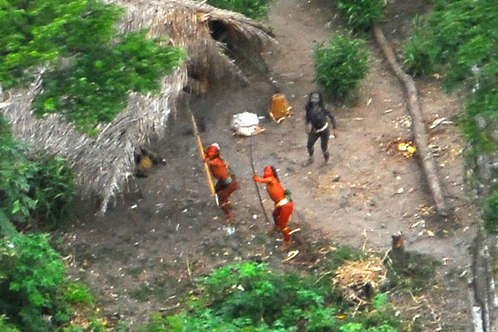 |
| Uncontacted Indians in Brazil appear defensive from the air. This photo was taken in 2008. © G. Miranda/FUNAI/Survival |
Some, like the uncontacted Awá, are nomadic hunter gatherers constantly on the move, able to build a home within hours and abandon it days later.
Others are more settled, living in communal houses and planting manioc and other crops in forest clearings as well as hunting and fishing.
In Acre there could be as many as 600 Indians belonging to four different groups. Here they live in relative tranquility in several demarcated territories which are largely untouched.
Perhaps 300 uncontacted Indians live in the Massacó territory in Rondônia.
 |
| Uncontacted Indians in the Brazilian Amazon, May 2008. Many are under increasing threat from illegal logging over the border in Peru. © G. Miranda/FUNAI/Survival |
They use enormous bows and arrows – one bow was found measuring over four metres – very similar in size and design to the Sirionó tribe live in neighbouring Bolivia.
They clearly like to eat tortoises as mounds of shells have been found in abandoned camps.
However, other uncontacted groups are teetering on the edge of extinction with no more than a handful of individuals left.
These tiny fragmented groups living mainly in Rondônia, Mato Grosso and Maranhão states are the survivors of brutal land grabs when they were targeted and murdered by loggers, ranchers, and others.
Today they are still deliberately hunted down and their forests homes are being rapidly destroyed.
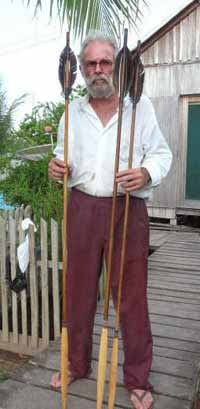
FUNAI official José Carlos Meirelles holds
arrows belonging to uncontacted Indians.
© Gleison Miranda/FUNAI
Mega dam and road building projects, part of the government’s ‘accelerated growth programme’, pose huge threats.
The Jirau and Santo Antonio dams being built on the Madeira river are very near to several groups of uncontacted Indians.
A recent report says that some of them are abandoning their land due to the noise and pollution from the construction sites.
All are extremely vulnerable to diseases like flu or the common cold transmitted by outsiders and to which they have no resistance: good reasons to avoid contact.
Even in this grim scenario, some remarkable stories of survival have emerged. Karapiru an Awá man survived an attack by gunmen and lived on his own for ten years hiding in the forest until he finally made contact with some colonists and now lives with other Awá.
The uncontacted peoples of Brazil must be protected and their land rights recognised before they, along with the forests they depend on, vanish forever.
Not undiscovered
There are tribes all over the world who have decided to remain isolated from national society or even other indigenous peoples.
That does not mean that they remain ‘undiscovered’ or ‘unchanged’. Most are already known about and however isolated, all constantly adapt to their changing circumstances.
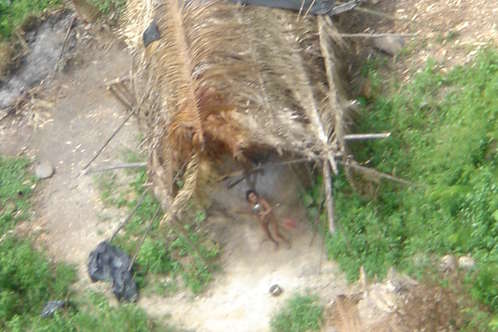 |
| Uncontacted Jururei Indian woman in the Urueu Wau Wau indigenous territory, Rondônia, Brazil. © Rogerio Vargas/Survival |
Many have occasional, sometimes hostile, contact with neighbouring tribes. They are well aware of other societies around them.
Neighbouring indigenous groups and FUNAI often know the rough whereabouts of such groups.
Since 1987, FUNAI has had a department dedicated to uncontacted Indians, whose policy is to make contact only in cases where their immediate survival is at risk.
Otherwise, no attempt at contact is made. Instead, FUNAI seeks to demarcate and protect their land from invaders with its protection posts.
Uncontacted peoples must have the right to decide whether to live in isolation or not. But in order to exercise this right they need time and space to do so.
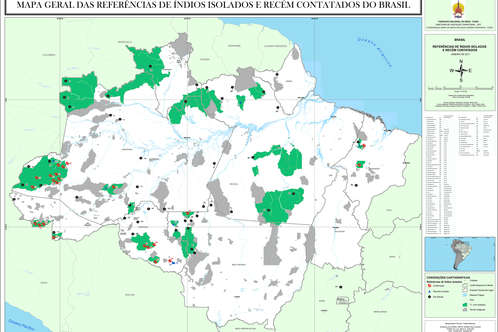 |
| Brazilian government agency for tribal peoples, FUNAI, produced this map of areas (colored dark green) that are home to uncontacted tribes. © FUNAI/Survival |
They will only survive if their land, which they have a right to under international and national law, is protected. They should be allowed to live in peace, free from fear of extermination and disastrous contact.
Contact should only happen when and where isolated peoples decide that they are ready for it.
Threats
Time and time again, contact has resulted in disaster for Brazil’s uncontacted tribes.
These very isolated peoples have not built up immunity to diseases common elsewhere, which is why they are so vulnerable.
It is not unusual for 50% of a tribe to be wiped out within a year of first contact, by diseases such as measles and influenza.
The Matis population fell by half following contact, when both young and old, including most of the shamans, died from introduced diseases.
Conflict and violent clashes are one of the most common outcomes of economic activity in areas where uncontacted people live.
Such conflicts have led to the death of some outsiders and many more Indians.
The last five surviving Akuntsu suffered brutal attacks, witnessed the massacre of their companions and saw their homes bulldozed by ranchers.
The last ones
Some uncontacted tribes are tragically down to their very last members. Here are some of the most threatened.
The ‘Last of his Tribe’
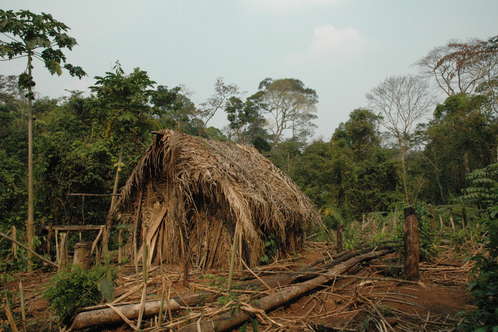 |
| The 'Man of the Hole's' house and garden where he grows manioc and other vegetables, Brazil. © J. Pessoa |
It is believed that this lone man is the last survivor of his people, who were probably massacred by cattle ranchers occupying the region of Tanaru in Rondônia state.
He lives on his own and is constantly on the run.
We do not know his name, what tribe he belongs to or what language he speaks.
He is sometimes known only as ‘the Man of the Hole’ because of the big holes he digs either to trap animals or to hide in.
He totally rejects any type of contact.
FUNAI has set aside a small patch of rainforest for his protection. This is entirely surrounded by cattle ranchers.
In late 2009, the man was viciously targeted by gunmen. In the past, many ranchers have used gunmen to kill uncontacted Indians in Rondônia.
Piripkura, Mato Grosso
We do not know what these people call themselves, but their neighbours, the Gavião Indians, call them the Piripkura, or the ‘butterfly people’, describing the way that they constantly move through the forests. They speak Tupi-Kawahib, a language family shared by several tribes in Brazil.
The Piripkura numbered around 20 people when FUNAI first contacted them in the late 1980s. After contact they returned to the forest. Since then, contact has been re-established with three members of the tribe.
In 1998 two Piripkura men, Mande-í and Tucan, walked out of the forest of their own accord. One of them was ill and was hospitalised.
During the short time he spent in hospital he talked about how in the recent past his people were more numerous and described how they had been massacred by white people, and how he and his sole companion moved through the forest hunting, fishing and gathering.
We do not know whether there are any other Piripkura survivors. But Mande-í and Tucan are in great danger as their land is constantly invaded by illegal loggers who are blocking their forest trails to prevent them from hunting.
FUNAI has signed a temporary order forbidding anyone to enter the Piripkura’s land without permission and banning all economic activities there. But unless the government takes urgent action to map out and sign their land into law now, the last known Piripkura survivors may disappear for ever.
Kawahiva of the Rio Pardo, Mato Grosso
Little is known about this tribe but they are believed to belong to the Kawahiva group. FUNAI estimated they numbered about 50 some years ago but nowadays they may be even fewer.
 |
| A hastily-abandoned house of uncontacted Indians, Rio Pardo, Brazil. © Survival |
It is believed they stopped having children because they are constantly fleeing loggers and other intruders.
As they are always on the move, they cannot cultivate and must rely solely on hunting and fishing.
Their land has not yet been protected and therefore their survival as a people is at great risk. Their forests are constantly being invaded by loggers many of whom operate out of Colniza, one of Brazil’s most violent frontier towns in one of the most deforested regions in the Amazon.
In an unexpected move, a federal prosecutor has launched an investigation into the genocide of these Kawahiva. According to the UN, the crime of genocide is ‘deliberately inflicting on the group conditions of life calculated to bring about its physical destruction in whole or in part’.
Evidence suggests that loggers are deliberately targeting them forcing them to abandon their houses and keep on the run.
Korubo of the Javari Valley
On the border of Brazil and Peru, the Javari valley is home to seven contacted peoples and about seven uncontacted Indian groups, one of the largest concentrations of isolated peoples in Brazil.
One group, the Korubo are known in the area as ‘caceteiros’ or ‘clubmen’ because of the large clubs they use to protect themselves.
In 1996 FUNAI made contact with a group of 30 Korubo who had split off from the main group, which remains uncontacted and repeatedly avoids contact with surrounding groups.
Lethal diseases caught from outsiders are affecting contacted groups in the territory and there are fears these could be transmitted to uncontacted groups with tragic consequences.
Act now to help the Uncontacted Indians of Brazil
Your support is vital if the Uncontacted Indians of Brazil are to survive. There are many ways you can help.
- Writing a letter to Brazil’s President about the threats faced by uncontacted Indians is a quick and simple way to let the government know of your concern.
- Donate to the campaign for the Uncontacted Indians of Brazil (and other Survival campaigns).
- Write to your MP or MEP (UK) or Senators and members of Congress (US).
- Write to your local Brazilian high commission or embassy.
- If you want to get more involved, contact Survival…
DESIGNATION OPTIONS PROJECT APPEALS
All active land purchases are listed on our Projects Page. On each page, the total acres and amount per acre are noted. When you donate to a specific appeal, 100% of your funds will go to conservation and we will send you a certificate, if requested, commemorating your conservation commitment.
RAINFOREST ACRE ADOPTION PROGRAM
Rainforest Trust purchases properties for $100 an acre on average. For every $100 donated to our Rainforest Land Fund, Rainforest Trust will send you a personalized certificate, when requested, commemorating your conservation commitment. These funds are then used where needed most to close fundraising gaps on open projects.
GIVE THE GIFT OF RAINFOREST ACRES
Donations to Rainforest Trust make wonderful and unique gifts to friends and family in honor of special occasions including birthdays, holidays, and anniversaries. Rainforest Trust will send you a certificate to commemorate this donation that can then be gifted to your recipient. When using our online system, please just include your recipient in the certificate section.
UNRESTRICTED DONATIONS
Rainforest Trust appreciates unrestricted donations, which will be used where needed most to maximize our conservation impact across all programs. We thank you for the trust your unrestricted donation implies and pledge to work hard to continually be deserving of it. - See more at: https://www.rainforesttrust.org/donation-options/#sthash.DEjs3J8I.dpuf
Fun Facts
-
The Amazon rainforest is the largest tropical rainforest in the world, covering over five and a half a million square kilometres (1.4 billion acres).
-
Over half of the Amazon rainforest is located in Brazil but it is also located in other South American countries including Peru, Venezuela, Ecuador, Colombia, Guyana, Bolivia, Suriname and French Guiana.
-
10% of the world’s known species live in the Amazon rainforest.
-
20% of the world’s bird species live in the Amazon rainforest.
-
It is home to around 2 and a half million different insect species as well as over 40000 plant species.
-
There are also a number of dangerous species living in the Amazon rainforest such as the cougar, jaguar and anaconda.
-
While the protection of the Amazon rainforest remains an issue, deforestation rates have been reducing while areas of conserved land have been increasing over the last 10 years.
-
In both 2005 and 2010 the Amazon rainforest suffered severe droughts that killed off large amounts of vegetation in the worst affected areas.
-
A recent study by climate change experts suggests that a 3 °C rise in world temperatures by the year 2010 would destroy around 75% of the Amazon.
-
Enjoy more rainforest facts or if you want to learn more about the Amazon check out our Amazon river facts.
How You Can Further Help the Rainforests:
What can you do to protect rainforests?
1. Live in a way that doesn’t hurt the environment – for example, don’t buy tropical woods. These are most often used for flooring or furniture. Mahogany, teak, and others are very common. Instead look for American woods such as oak, cherry, walnut, ash, and beech. Beautiful floors are now available made from bamboo – this is actually a fast-growing grass that is more environmentally friendly than cutting down huge old-growth trees.
2. Eat less meat! So much meat is produced now in large feed lots - “CAFO’s” – Concentrated Animal Feeding Operations – that the requirement for feed around the world has forced large swaths of the Amazon to be turned into fields to grow soybeans for export.
3. Learn about the rainforest – as you are doing – and share your knowledge and concerns with others. Pass along this book!
4. Support companies that are acting in ways to protect the rainforests. Don’t hesitate to ask your local lumberyard where their tropical wood comes from – ask if theirs is certified by the “Forest Stewardship Council”, an organization that certifies that wood is from responsibly managed forests.
5. Use FSC certified paper – see if your school district is using FSC paper. A list of approved paper brands is available online at the FSC website.
6. Support the formation of parks and preserves in forest habitat at home and abroad.
7. Support and donate to organizations that purchase large tracts of rainforest land for preservation – most notable are the World Wildlife Fund and The Nature Conservancy. Have a rainforest fund-raiser!
8. BUY some rainforest land for preservation – you can do this through the World Land Trust.
9. Support the people who live in the rainforests in their efforts to save their environment. This can be done through purchasing crafts from rainforest inhabitants and from visiting rainforests yourself. Ecotourism supports efforts to preserve these wild areas. Countries like Peru and Costa Rica are very aware of the value of their rainforests in sustaining the tourism sector of their economy.
10. Support international programs that provide family planning assistance to poor rural families.
Did you know that by reducing your consumption of meat you can help save the Amazon? The Amazon Rainforest is being rapidly destroyed to use the land to grow soybeans which are then sold around the world for cattle food. A US Foreign Agriculture Service report says:
...significant additional deforestation will likely occur in the Amazon region, and that substantial agricultural development will follow in the next few decades. As outlined above, large-scale cattle rancher’s and small-scale farmers are currently responsible for the lion’s share of Amazon deforestation, and their access to new land parcels will be accentuated by new road development.
One million hectares equals almost 2.5 million acres.
60 million hectares equals over 230,000 square miles!
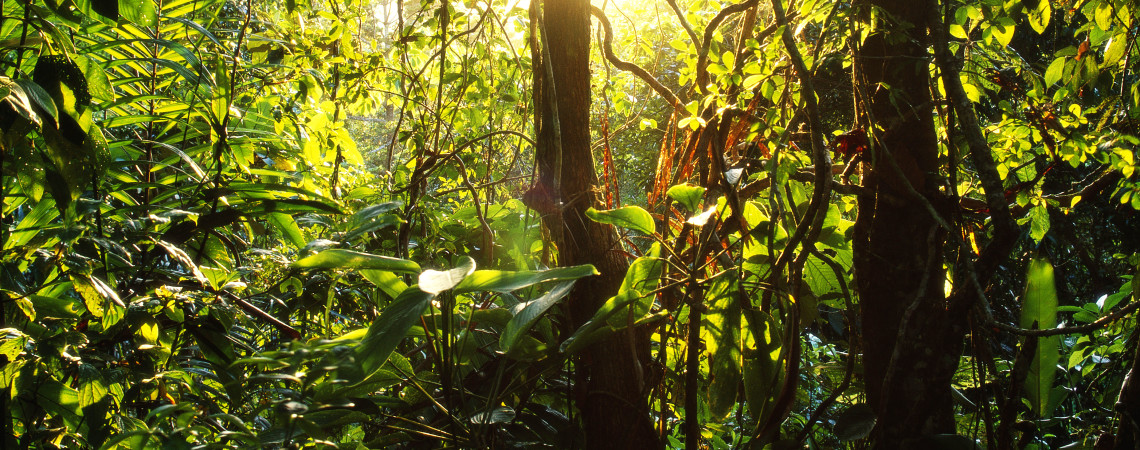
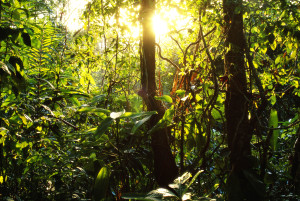
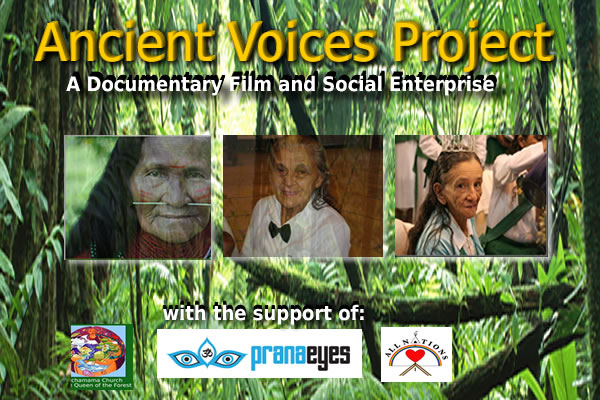

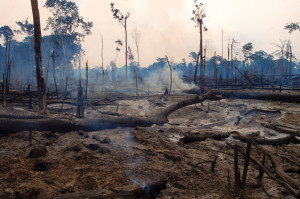


Participate!